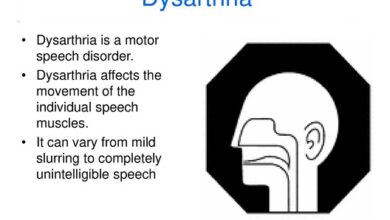Syntactic Functions types examples and Questions
Syntactic Functions
As seen, the syntactic functions study the relationship between one term and another within a grammatical sentence, within this context, it determines which words are essential to build meaning and which are accessory and can be removed, according to the classification below:
- An essential syntactic function is the one that brings the basic structure of the sentence, the obligatory terms for the sentence to make sense;
- The accessory syntactic functions, on the other hand, appear in the sentence, can complete the meaning and bring additional information, but can be removed without prejudice to the complete meaning;
- In the case of the integral syntactic function, there is a greater need to be present in the sentence. But they are not structural words, but complements to the nouns and/or verbs of the utterance.
Thus, the syntactic functions are as follows:
- Essentials : subject and predicate.
- Members : verbal complement, nominal complement and passive agent.
- Accessories : adverbial adjunct, adnominal adjunct, appositive and vocative
Examples of Syntactic Funtions
Example 1 : Guys, in USA, our beloved country, students and teachers are protesting against the lack of educational conditions.
- Subject: students and teachers
- Predicate: protest against the lack of educational conditions
- Verbal complement (indirect object): against lack
- Nominal complement: of conditions
- Adverbial adjunct: in USA
- Adjunct adnominal: educational
- Bet: our beloved country
- Vocative: Personal
Example 2 : Our beloved country, USA, protests against the lack of teaching staff.
- Subject: Our beloved country.
- Predicate: protests against the lack of teaching staff.
- Bet: USA
- Verbal complement (indirect object): against the lack.
- Nominal complement: of personnel.
- Adjunct adnominal: teacher.
Note that in example 1 “our beloved country” plays the role of a bet, because it extends the term “USA”, but in example 2, “our beloved country” plays the role of subject, because it is the term that is spoken about.
Syntactic functions types
Subject
Subject is an essential function, which brings the structure of the sentence. It is the one or the thing spoken of. It can also be seen as an agent of a verb, but this relationship is not mandatory. Follow the example:
“Matheus took care of his patient perfectly”
To recognize the syntactic function of the subject of the sentence, one can ask the verb “quem?” or what?”. In this case, it would be “who answered perfectly?” and the answer obtained, “Matheus, represents the subject of the sentence.
Predicate
The predicate is all the part of the sentence that has the verb, excluding the subject. It is mandatory that the predicate has a verb, in general, to detect it, just find the verb, question it to find the subject, and everything that remains will be a predicate.
With the same example as in the previous topic, we can assume that, with Matheus being a subject, the predicate will be “perfectly attended to his patient”. Note that this is a larger construction that has the verb “atender” conjugated in the third person of the perfect tense.
verbal complement
Verb complements are terms that are attached to verbs to complete the meaning of the sentence. They can be classified as direct or indirect objects , they are integral terms of the sentence and their absence brings loss of meaning, although the entire sentence is not distorted.
A direct object is one that attaches to the verb without the need for a preposition, as in: “I carried her backpack for a kilometer”. See that no word needs to make the connection between the verb “to carry” and its direct complement “backpack”.
In “I delivered the chocolate to my bride”, notice how the verb to deliver has two complements: the first concerns what was delivered (the chocolate) and the second brings information linked by preposition, which is the indirect object “to my bride ”.
nominal complement
Nominal complements, in turn, are linked to nouns, notably abstract nouns, adjectives and adverbs. They serve to reinforce and complete the meaning within sentences, as an integral syntactic function, which is necessary but not structural.
In the example “love in itself is a force”, notice that “in itself” is a complementary expression to the abstract noun “love”. It is important to realize that the emphasis brought by this nominal complement makes it an integral term and, without it, the sentence would be more meaningless.
adverbial adjunct
The adverbial adjunct is an accessory syntactic function of the sentence, that is, it can be removed without much damage to the main meaning. In general, it is an adverb or adverbial phrase that portrays place, time, intensity, mode or more detailed information about the event of the action.
“Entrance students study a lot for the tests” — note that, in this sentence, the word “very” expresses the intensity with which the subjects (“vestibular students”) study, but removing this adverbial does not invalidate the statement as a whole: “ the entrance exam students study for the exams”.
adnominal adjunct
The adnominal adjunct also complements the name of the sentence, characterizing the subject or another noun. It is an accessory syntactic function because it only specifies that word, but it is not essential for understanding what the sentence is about.
In “The pretty girl went to school today”, notice how the word “pretty” is connected to the name “girl”. It is an adnominal adjunct because the removal of “beautiful” does not change the main idea of the text, as it is just a characterizing adjective that qualifies the beauty of the girl, even if this data is not essential to convey the message that she attended classes.
Vocative
Syntactic function related to the “call” of the interlocutor. Much used in oral speeches, conversations and more exclamatory poems. It is a term that is independent of the sentence, as we see in: “Juliana, pay attention to the cars that pass in the streets!”. The woman’s name is just a way to get your attention, it’s a vocative, which is always separated from the prayer by means of commas.
bet
With the same scientific method and the way in which we can make conjectures. However, it is sometimes difficult to understand the logic as an accessory term, the bet is a way of explaining what was said earlier. It is usually linked to a name and carries a meaning, explanation or specification regarding that noun.
As can be seen in “Marriage, a union of souls, is an everlasting covenant.” See that the bet is positioned between commas and brings a meaning to the term “marriage”, as an explanation, a specific interpretation for the noun within the sentence.
Questions about syntactic functions
(Vunesp — adapted) The following text is one of the many jokes that circulate on the Internet. Read it to answer the question.
The daughter enters her father’s office, with her husband in tow, and asks bluntly:
— Papa, why don’t you put my husband in the place of your partner who just died?
And the father immediately replies:
— Look, daughter , with the funeral home staff?! Fine by me…
In the text, there are two occurrences for the noun daughter. About them, it is correct to say that:
a) are subjects in the two clauses in which they appear.
b) complement the verb of the sentences in which they occur.
c) are expressions used as a call in both sentences.
d) have distinct syntactic functions, respectively, subject and vocative.
e) constitute equal syntactic uses, that is, object of the verb in both occurrences.
In the first occurrence, the verb “enters” can be questioned like this, to find the subject: “ who enters?” and the answer will be “the daughter”. So, this is a subject.


